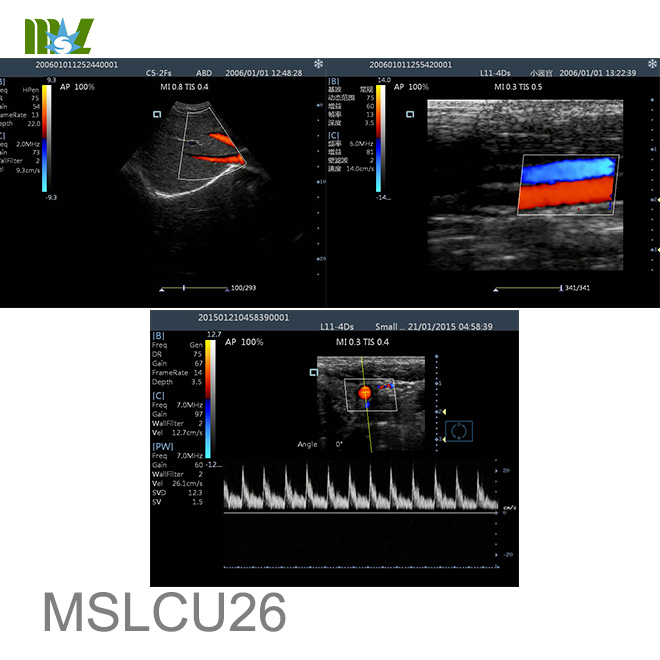Color Doppler Ultrasound: Principles and Advantages
Color ultrasound is a high-definition black and white B ultrasound plus color Doppler ultrasound. First of all, let's talk about ultrasonic frequency shift diagnostic method, which is D-ultra. This method applies Doppler effect principle. When the source and receiver (Probe and reflector) relatively move, the echo frequency change. This change in frequency is called the frequency shift, D ultra including pulse Doppler, continuous Doppler and color Doppler flow images.

In general, color Doppler ultrasound uses autocorrelated technology for Doppler signal processing. using autocorrelated technology to obtain blood flow signal, then superimposed on the two-dimensional images by color-coded real-time. That is the formation of color Doppler ultrasound blood flow images. Thus, color Doppler ultrasound (color ultrasound) not only has the advantages of two-dimensional ultrasound image structure, but also provides a wealth of information on hemodynamics. The practical application of color Doppler ultrasound has been widely valued and welcomed. It is called "non-invasive angiography". Its main advantages are:
① can quickly and intuitively display the two-dimensional planar distribution of blood flow.
② can show the direction of blood flow.
③ help identifies the arteries and veins.
④ is conducive to the identification of vascular lesions and non-vascular lesions.
⑤ is conducive to understand the nature of blood flow.
⑥ can easily understand the timing and speed of blood flow.
⑦ can reliably find shunt and regurgitation.
⑧ quantitative analysis blood flow on the origin, width, length, area.
However, the relevant technology used in color ultrasound is pulse wave. When the velocity of the detection object is too high, the color flow will be wrong, and th quantitative analysis is obviously inferior to that of the spectrum. Nowadays, color Doppler ultrasound has the function of spectrum Doppler. So color Doppler ultrasound is a great helper for the doctors.




 Price is 8-20% Lower Than Other
Price is 8-20% Lower Than Other






